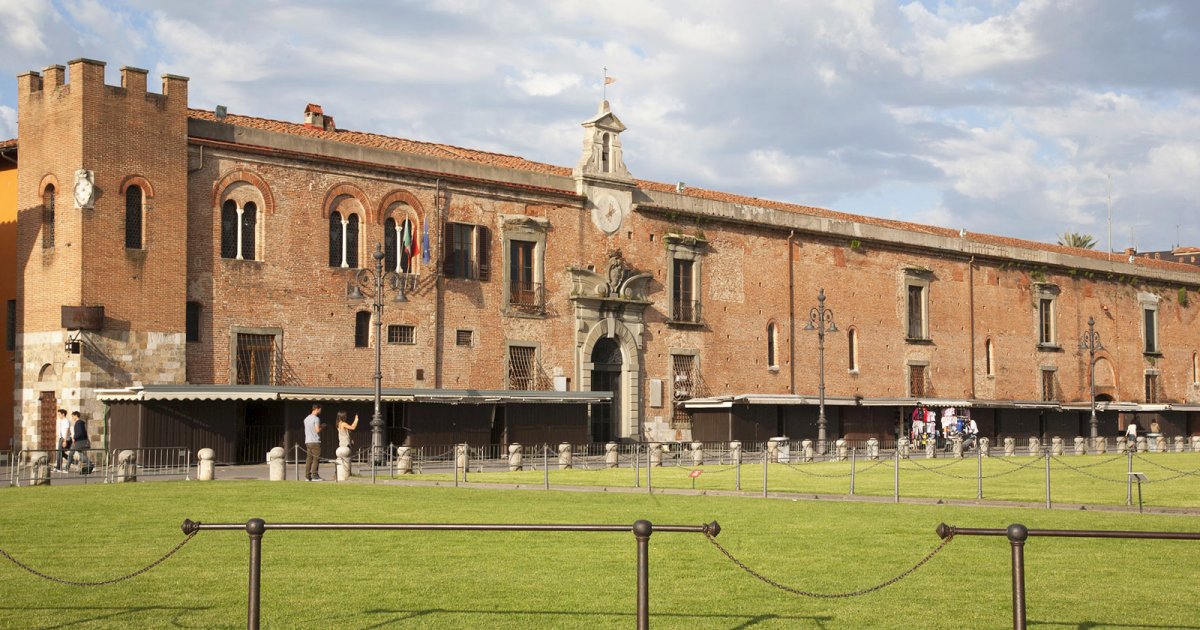PIAZZA DEI MIRACOLI, Sinopias Museum
 Language: English / USA
Language: English / USA
Of all the various treasures you can admire in Piazza dei Miracoli, there's one that the general public is barely familiar with that's actually quite fascinating: the Sinopias Museum.
It is an ancient building with a brick façade that dates back to the second half of the 13th century. Just think, up until fifty years ago this was a hospital, and the large rectangular hall where you'll see the sinopias today was where the sick and pilgrims were attended to.
But what exactly are sinopias? You'll find out by visiting the museum: they are the preparatory drawings that are used in the fresco technique. The technique calls for the painting's color pigments to be applied to the wall when the top layer of the plaster is still wet. The artist was therefore forced to divide the wall into sections called "giornate", or days, each of which corresponded to the part of the fresco that had to be completed precisely in a day. With this system painters could quickly decorate large wall surfaces with lasting results, although the little time available to the artist made it almost impossible to correct any mistakes. For this reason, the preparatory drawing was essential for testing the composition, studying the poses of the figures, and defining the various details. The sinopias were used to do this: the name comes from the city of Sinop on the Black Sea, where the red dust that was used to make the drawing came from.
At the lower level of this splendid space you can admire the sinopias of fifteenth century frescoes, especially those of Benozzo Gozzoli, while the sinopias of the most famous frescoes, starting with the Triumph of Death in Camposanto, are located in the upper level, where you can also enjoy spectacular views.
FUN FACT: in addition to being the largest collection of medieval drawings in the world, the Sinopias Museum is also probably the only museum that came out of... a bombing!!!! In fact, in the Second World War an American grenade struck the roof of the Cemetery, setting it on fire. In order to protect the frescoes from the molten lead flowing down from above, they had to be detached with a "tear-off" technique: underneath, they discovered the sinopias made with red ocher. So these were also detached right away, and were the inspiration for the creation of a special museum just for them!
And with this we have finished our tour of Piazza dei Miracoli in Pisa. MyWoWo thanks you for staying with us, and will see you at the next Wonder of the World!



